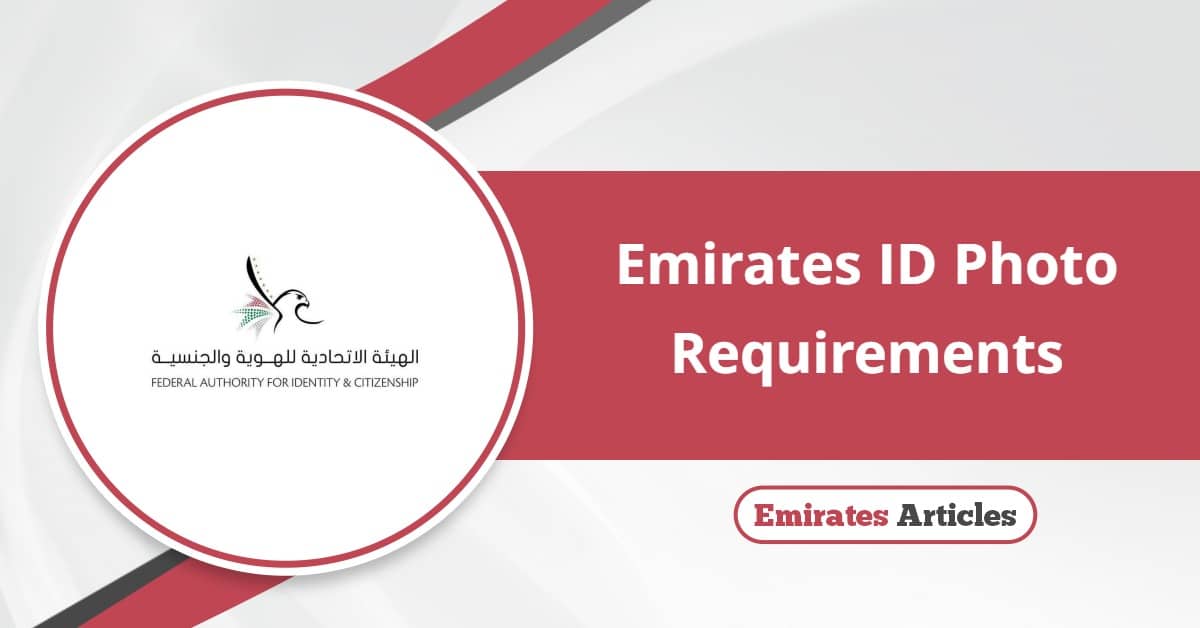Emirates ID Photo Requirements, Size and Guidelines

When processing your Emirates ID or updating your ID picture, there are specifications and requirements you should keep in mind when taking or selecting a photograph. The official Emirates ID photo requirements define the size, quality, appearance, and technical specifications of the image you are expected to submit. This article will take you through these guidelines and requirements, making sure that you do not encounter any photo-related issues when creating or updating your Emirates ID.
Table Of Content
- 1 Emirates ID Photo Requirements: Size and Dimensions
- 2 Emirates ID Photo Requirements: Facial Expression and Pose
- 3 Emirates ID Photo Requirements: Attire, Glasses, and Head Coverings
- 4 Emirates ID Photo Requirements: Quality and Technical Specifications
- 5 Common Mistakes to Avoid When Taking Emirates ID Photo
- 6 Questions & Answers
Emirates ID Photo Requirements: Size and Dimensions
These are the official photo size and dimensions required for an Emirates ID photo:
- Dimensions: 35mm width x 45mm height.
- Resolution: Minimum of 600 dpi.
- Head Size: Head height should be between 31mm and 36 mm, that is, occupying about 70 to 80 percent of the image.
- Background: Plain white with no shadows.
Checkout: Emirates ID Biometric Appointment | How to Reschedule Emirates ID Biometric Appointmen | How many days will it take to get an Emirates ID after a medical test | How to Add Emirates ID to Apple Wallet | Emirates ID Biometrics Centers
Emirates ID Photo Requirements: Facial Expression and Pose
When taking a picture for your Emirates ID, adhere to the following appearance guidelines:
- Expression: Your facial expression should be neutral, typically with mouth closed and eyes open.
- Head Position: Your head should be directly facing the camera and not lean to any side.
- Eyes and Face Visibility: Both eyes should be open and clearly visible, and your hair should not cover the face.
It is important to note that any photos you want to use for your Emirates ID should be recent (taken within the last six months) to reflect your current appearance.
Emirates ID Photo Requirements: Attire, Glasses, and Head Coverings
The clothing and accessory rules for an Emirates ID photo are as follows:
- Clothing: Ensure you wear casual or everyday attire; taking the photo in uniforms is not allowed.
- Glasses: Avoid wearing glasses. If necessary, ensure no glare or reflections, and eyes are clearly visible.
- Head Coverings: Headgears are only permitted for religious reasons, but the full face must be visible from the bottom of the chin to the top of the forehead and from ear to ear.
Emirates ID Photo Requirements: Quality and Technical Specifications
When taking or processing the photograph for your Emirates ID, ensure that it meets the following technical expectations:
- Colour: Pictures should be high-quality and able to reflect the natural skin tone of the subject.
- Lighting: Light conditions should be even and sufficient for clear illumination. Photos with shadows or red-eye will likely be rejected.
- Print Quality: It is required that photos be printed on high-resolution, photo-quality paper with no ink marks or creases.
Common Mistakes to Avoid When Taking Emirates ID Photo
When taking a photograph for your Emirates ID, avoid the following mistakes:
- Smiling or showing teeth.
- Wearing sunglasses or tinted lenses.
- Tilting your head to the side or not directly facing the camera enough.
- Using backgrounds with patterns, colours, or shadows.
Conclusion
Preparing a photo for your Emirates ID requires a careful review and adherence to the official photo specification guidelines. Failing to tailor the photo according to the outlined requirements may lead to an outright rejection or delays in the application process. To be safe, it is advisable to visit a professional photo studio familiar with the UAE ID photo requirements to ensure a standard photo outcome.
Questions & Answers
The photo should be 35mm wide and 45mm high.
The background of your Emirates ID picture should be plain white without shadows.
Glasses are allowed if they do not obscure the eyes or reflect light; however, it's recommended to remove them to avoid issues.
Yes, head coverings are allowed for religious reasons, but the full face from the bottom of the chin to the top of the forehead and both edges of the face must be clearly visible.
Yes, but ensure it meets all specifications regarding size, background, lighting, and quality.
